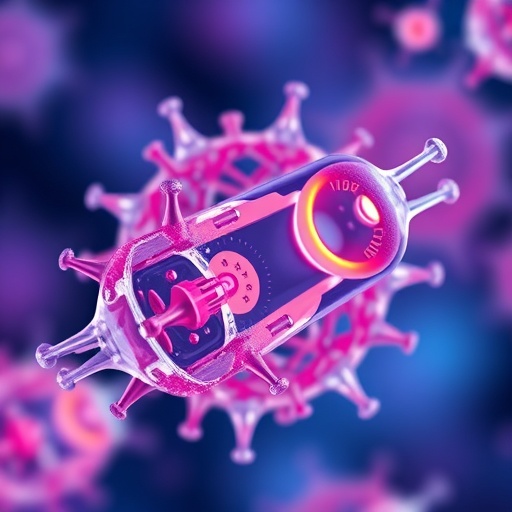
Researchers from Rutgers Health have recently made a significant breakthrough regarding the treatment of congenital generalized lipodystrophy (CGL), a rare genetic disorder that severely affects the body’s ability to store fat. This debilitating condition leaves patients with almost no fat tissue, leading to extremely high levels of insulin resistance, diabetes, and a host of severe metabolic complications. The traditional treatment involves daily injections of a synthetic hormone known as metreleptin. However, a recent study published in The New England Journal of Medicine suggests that tirzepatide, a diabetes medication administered weekly, may present a more effective and less painful alternative.
CGL is a rare disorder that affects only a few thousand individuals around the globe. Patients experience life-threatening complications due to the absence of fat storage, which is essential for the proper regulation of multiple metabolic processes. Normally, fat tissue helps store energy and release hormones that govern appetite and insulin sensitivity. Without it, patients with CGL frequently endure extreme metabolic instability and related health issues, including drastically reduced life expectancy.
The study was led by Christoph Buettner, a prominent figure in the field, who serves as the chief of endocrinology, metabolism, and nutrition at the Rutgers Robert Wood Johnson Medical School. Buettner emphasized the dire condition of CGL patients, observing that the severe insulin resistance leads to chronic health issues, making the search for more viable treatment options critical. Patients currently rely on painful and costly daily injections, which raise concerns about both their affordability and overall quality of life.
Metreleptin, the current treatment standard, mimics the hormone leptin, which is naturally secreted by adipose tissue. The hormone plays a crucial role in regulating energy balance and metabolism. Unfortunately, the daily administration of metreleptin presents a considerable difficulty for patients. As explained by study co-author Svetlana Ten, individuals with CGL are unable to use standard injection sites, as they lack the necessary subcutaneous fat. This means each injection is not only costly but also painful, adding to the distress already felt by these patients.
Given these challenges, researchers turned their attention to tirzepatide, a medication initially developed for the treatment of Type 2 diabetes and obesity. Tirzepatide operates by improving insulin sensitivity and regulating appetite, and it is administered through weekly injections, representing a significant reduction in the burden placed on CGL patients. Such a transition in treatment modality proposes not only alleviation from pain but also offers a more financially feasible option for those afflicted by this rare disorder.
In the study, the first patient was a 23-year-old male who had endured the painful daily injections for two years before opting for an alternative. After three weeks of treatment with tirzepatide, researchers noted a remarkable drop in his average blood glucose levels from 252 to 128 mg/dL. This significant improvement indicated that the patient experienced nearly complete normalization of glucose levels during an impressive 93% of readings, a remarkable achievement considering the prior regimen.
The second patient, a 64-year-old woman, presented a different but equally compelling case. Previously, she had required supplemental insulin injections to control her blood glucose since the metreleptin alone was insufficient. However, upon beginning treatment with tirzepatide, her blood glucose levels were well managed with this single medication alone, illustrating the potential for tirzepatide to fully replace the current treatment protocol.
The findings highlighted several unexpected elements regarding the biochemical pathways engaged by these therapies. While it seemed logical to utilize leptin therapy given that it directly addresses the deficiency in patients with CGL, the effectiveness of tirzepatide surprised many in the field. Both medications operate at the nexus of neural influences in the brain, yet they engage different signaling pathways. This nuanced understanding may open avenues for further exploration into the elaborate interplay of these hormones in metabolism and energy homeostasis.
Buettner noted that the unexpected success of tirzepatide in CGL patients suggests the possibility of exploring its efficacy in various other medical conditions related to leptin deficiency. However, continued research is essential to fully elucidate the long-term consequences of adopting such a treatment approach. While the study focuses on a small sample size due to the rarity of the condition, researchers are keen to initiate larger trials to validate their initial observations.
The implications of these findings stretch beyond the immediate needs of patients with CGL. Should tirzepatide prove effective in larger clinical trials, it could revolutionize the treatment landscape for similar metabolic disorders. The results indicate that a simpler, more affordable, and less painful treatment paradigm may be on the horizon, a prospect that holds great promise not just for CGL patients but potentially for a wider range of individuals suffering from insulin resistance and metabolic dysfunctions.
Additional studies would allow for a more comprehensive assessment of the long-term efficacy and safety of tirzepatide, particularly given the complexity of metabolic conditions. Expanding the scope of research to encompass additional leptin-deficient states could yield further insights into the broader metabolic implications of this innovative therapy.
As CGL remains a fundamentally understudied condition, this preliminary research signals a significant step forward in how the medical community may approach difficult cases involving severe insulin resistance and related disorders. Future investigations will be pivotal in validating these preliminary results, potentially leading to better management strategies for patients enduring the severe metabolic consequences of CGL.
As the medical community cautiously reviews these promising findings, researchers, physicians, and patients alike are hopeful for the continued advancement of therapeutic strategies that prioritize accessibility, affordability, and importantly, the quality of life for those impacted by congenital generalized lipodystrophy and similar disorders.
Subject of Research: People
Article Title: 10.1056/NEJMc2413871
News Publication Date: 29-Jan-2025
Web References: DOI
References: N/A
Image Credits: N/A
Keywords: Insulin resistance, Leptin, Tirzepatide, Lipodystrophy, Diabetes treatment, Metabolic disorders, Rare diseases, Endocrinology, Hormone therapy.
Tags: congenital generalized lipodystrophy treatmentdiabetes medication for CGLendocrine disorders treatment advancementsfat tissue regulation in metabolisminsulin resistance managementlife expectancy in rare disordersmetabolic complications from CGLmetreleptin alternative therapypain relief innovations in medicinerare fat storage disorderRutgers Health research breakthroughweekly tirzepatide injections





